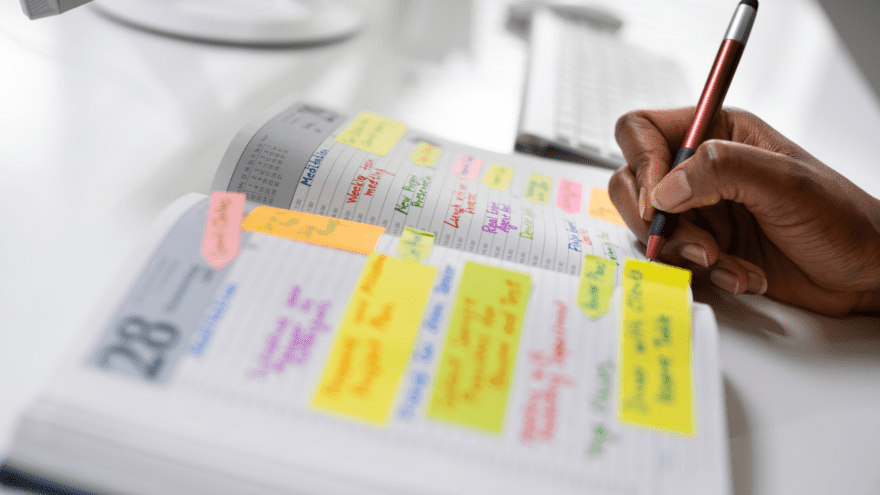
On the surface, it seems logical to have an overly specific calendar when it comes to scheduling every minute of our day. After all, we cannot manage what we don’t measure.
However, there are risks associated with being too specific on your calendar. When we try to micromanage every detail of our day, we forget to leave room for the unexpected. We may become so focused on sticking to our plan that we miss opportunities for spontaneity and creativity.
Moreover, being overly specific on our calendars can lead to feelings of overwhelm and anxiety. When we look at our schedule and see a long list of tasks, each with a specific time slot, it can be daunting to think about how we’re going to get everything done. And if something unexpected comes up, we may feel like we’ve failed or fallen behind.
That’s where one element of TimeCrafting comes in: Theming your time.
And two types of “time theming” – Daily Themes and Horizontal Themes – can give you the flexibility that you need.
Daily and Horizontal Themes: How They Help
Daily Themes are a way of assigning a theme to each day of the week. For example, Monday could be focused on administrative tasks, Tuesday on marketing, Wednesday on writing, Thursday on client meetings, and Friday on personal development. By assigning a theme to each day – even on weekends – you can focus on a particular area of your work or life, without being overly specific about the tasks you need to complete.
Horizontal Themes are a way of assigning a theme to a block of time, such as a morning or an afternoon. For example, you could have a “deep work” theme for the morning, where you focus on your most important tasks, and a “shallow work” theme for the afternoon, where you handle less important tasks.c (As a might owl myself, I’d flip those.)
By theming your time, you create a more flexible and adaptable approach to time. You can adjust your plans as needed, without feeling like you’ve failed or fallen behind. And most importantly, you’re able to maintain a healthy balance between structure and spontaneity, which is essential for creativity and a sense of productiveness.
But there’s more drawbacks to consider when approaching your calendar in an overly specific way.
The Drawbacks of an Overly Specific Calendar
Furthermore, being overly specific on our calendars can have a negative impact on our mental health. It can lead to feelings of inadequacy, burnout, and a lack of motivation. We may become so fixated on completing every task on our list that we forget to take breaks, relax and enjoy life. Thus, it is crucial to find a balance between structure and flexibility in our daily schedules.
One way to achieve this balance is by prioritizing self-care activities in our calendars. It can include activities like exercise, meditation, or spending time with friends and family. By scheduling self-care activities, we create an opportunity to take a break from our busy schedules and recharge our batteries. (Hint: Horizontal Themes are ideal for this.)
In addition, it is essential to leave room for spontaneity in our daily schedules.
Spontaneous activities can lead to unexpected experiences, opportunities, and creativity. It could be something as simple as taking a walk during your lunch break, trying a new restaurant or spending time with a friend. Allowing for these activities in your schedule can help to reduce stress, promote well-being and enhance your overall quality of life.
Final Thoughts
While having an overly specific calendar can be helpful in certain situations, it’s important to avoid being too rigid with our schedules. By using Daily and Horizontal Themes (or Vertical and Horizontal Themes, if you prefer) for broad categories of tasks, we can create a more flexible and adaptable approach to managing our relationship with time. This allows us to maintain a healthy balance, be more intentional with our time, and avoid feeling overwhelmed or anxious.
So remember: Use your calendar as a tool to manage what matters, not your every minute.